The American Automobile Association (AAA) estimates 115.2 million Americans will travel 50 miles or more from home over the 10-day year-end holiday travel period.
This year’s total number of domestic travelers is a 2.2 increase over last year and the second highest year-end travel forecast since 2000, when AAA began tracking holiday travel.
2019 remains the busiest Christmas and New Year’s travel period on record with 119 million travelers.
“This year-end holiday forecast, with an additional 2.5 million travelers compared to last year, mirrors what AAA Travel has been observing throughout 2023,” said Paula Twidale, senior vice president. “More Americans are investing in travel, despite the cost, to make memories with loved ones and experience new places.”
AAA estimates nearly 104 million people will drive to their holiday destinations, an increase of 1.8 percent compared to 2022.
This year’s projected number of drivers is the second highest on record after 2019 when 108 million drivers hit the road for the holidays.
Airports are expected to be the busiest they’ve ever been over the Christmas and New Year’s travel period.
AAA projects 7.5 million air travelers this holiday season, surpassing 2019’s record of 7.3 million passengers.
The number of people traveling by other modes, like bus, train, and cruise, is projected to surpass 2019.
AAA expects more than 4 million Americans will take alternative transportation over Christmas and New Year’s compared to 3.66 million in 2022 and 3.89 million in 2019.
Demand for cruises has skyrocketed post-pandemic, and the industry is now preparing for the wave of bookings that traditionally happens at the start of the new year.
Transportation data and insight provider, INRIX, points to several days of potentially bad traffic during the 10-day holiday period. Saturday, December 23, and Thursday, December 28, will be the most congested days on the road.
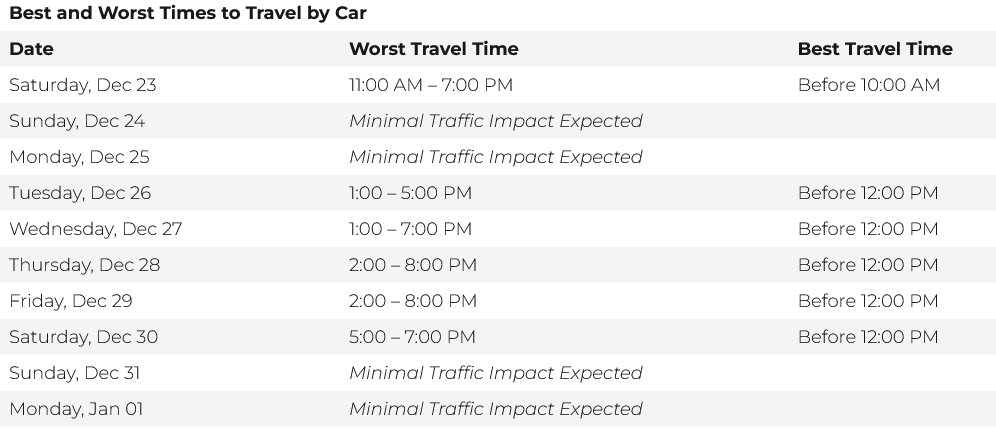
INRIX also says Saturday, December 30, when many people will be heading back home from their holiday destinations or traveling for New Year’s Eve, will see an increase in traffic compared to a normal Saturday.
The best times to hit the road are before lunchtime or after 7 o’clock in the evening.
“Nationwide, drivers could see travel times up to 20 percent longer this holiday season. In major metros, especially in Denver, Minneapolis, and Washington, DC, drivers could experience nearly double the typical delays,” said Bob Pishue, transportation analyst at INRIX. “Avoid peak commuting hours and use traffic apps, local DOT notifications, and 511 services to minimize holiday travel traffic frustrations.”



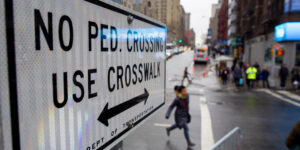




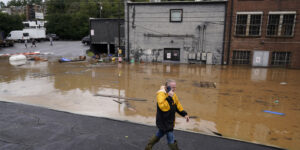





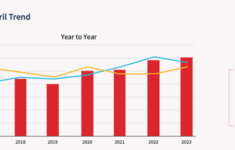





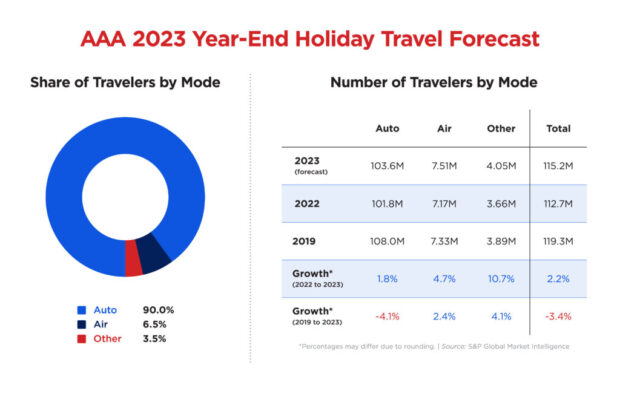
 Global Natural Catastrophe Insured Losses Exceed $102B During Q1-Q3 2024: Aon
Global Natural Catastrophe Insured Losses Exceed $102B During Q1-Q3 2024: Aon  Why Homeowners Insurers Are Losing Money: Roofs Matter, Not Just Rates
Why Homeowners Insurers Are Losing Money: Roofs Matter, Not Just Rates  Distractions Rises for Drivers, Pedestrians on Halloween
Distractions Rises for Drivers, Pedestrians on Halloween  Chubb Continues ‘Record’ Year With 13.8% Jump in Q3 Net Income
Chubb Continues ‘Record’ Year With 13.8% Jump in Q3 Net Income 